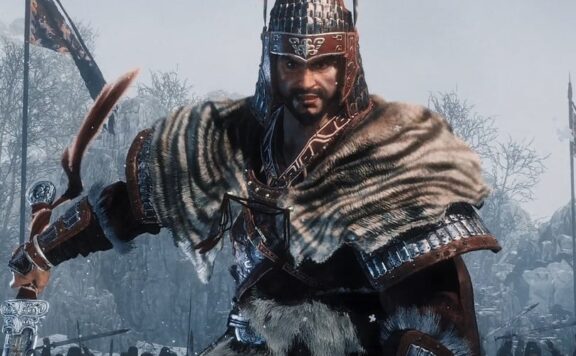With such a rigid, unmoving ground formula, there’s always been little room for experimentation in the Musou Warriors franchise. Over the past decade or so though, Omega Force has done a great job in exploring new and interesting systems, constantly reshuffling that action-heavy core the series has become known for.
Samurai Warriors: Spirit of Sanada is yet another experiment, though one that takes a slightly different tack from what we’ve seen before. Unlike Xtreme Legends and Empires – the two usual Warriors expansions that come attached to each numbered instalment – there’s a larger emphasis on story here, tracking the Sanada clan’s deeds during the Sengoku period.
When the game starts, our usual posterboy Yukimura is nowhere to be seen. It’s actually his father, Masayuki, who initially takes the helm, riding into battle alongside Shingen Takeda, one of the era’s most notable warlords.
The writing and dialogue goes much further than it has in the past, giving us a more in-depth view of characters and the clans they hail from. In fact, one of the game’s systems has you scanning through text boxes, highlighting keywords and adding their entries to a growing encyclopedia of knowledge. It’s a strange touch though one hardcore fans and armchair historians will appreciate. Just be warned – while informative, these are just text logs with no video or audio.
Moving away from the series’ hack n’ slash combat was never going to happen. In Spirit of Sanada, it’s still very much front and centre though Omega Force has reworked the playable segments between battles. For a while now, they’ve been playing around with idea of settlements – hub zones where players can liaise with other officers as well as buy and upgrade their gear.
These castle towns and villages have always come across as a bit lifeless, however, like a waiting room or multiplayer lobby. Here, however, they feel slightly more alive. By simply walking around you can trigger cutscenes and events with some NPCs offering side missions. Other activities, such as training in the dojo and fishing, are also available, giving players more of a reason to stick around.
To drive the story forward and unlock a wider selection of characters, you’ll need to participate in key battles. Unlike your standard Warriors game the bigger, more pivotal clashes are split between several skirmishes instead of just one standalone battle. As a result, each one feels more like an actual campaign.
By introducing “feats” and “stratagems”, Omega Force helps to flesh them out even further. These systems work similarly to challenges, tasking players with smaller objectives then rewarding them with events that influence the flow of battle. There are other incentives to change your play style too, some tasks paying out XP and gold to improve your characters.
Spirit of Sanada is a different approach to the series and one that even holds a few surprises. Each time you go into battle, you feel like you’re actually building towards something, growing your settlement, strengthening relationships, and gathering resources. It’s a nice change from the constant character-hopping of previous games.
What’s Good:
- Improved focus on story and characters
- Progress actually feels rewarding
What’s Bad:
- Combat system peaked a couple of years ago
- Same visuals as Samurai Warriors 4 (many of the same assets too)
- Battles emphasise grinding which tests patience more than skill
That said, the combat system remains completely untouched since Samurai Warriors 4 and for all its minor tweaks and nuances, time’s running out for this ageing brand of battlefield action. Even long-time fans will agree that, after being pulled in just about every direction, the series desperately needs to move on. No pressure, then, Dynasty Warriors 9.
Score: 6/10
Version tested: PlayStation 4





